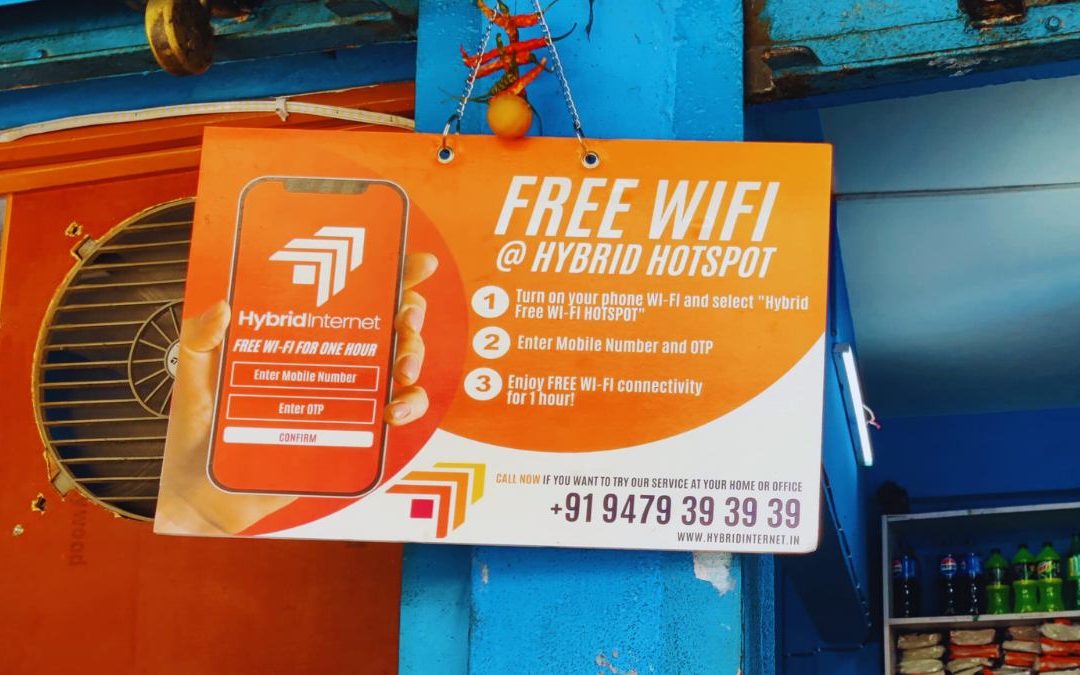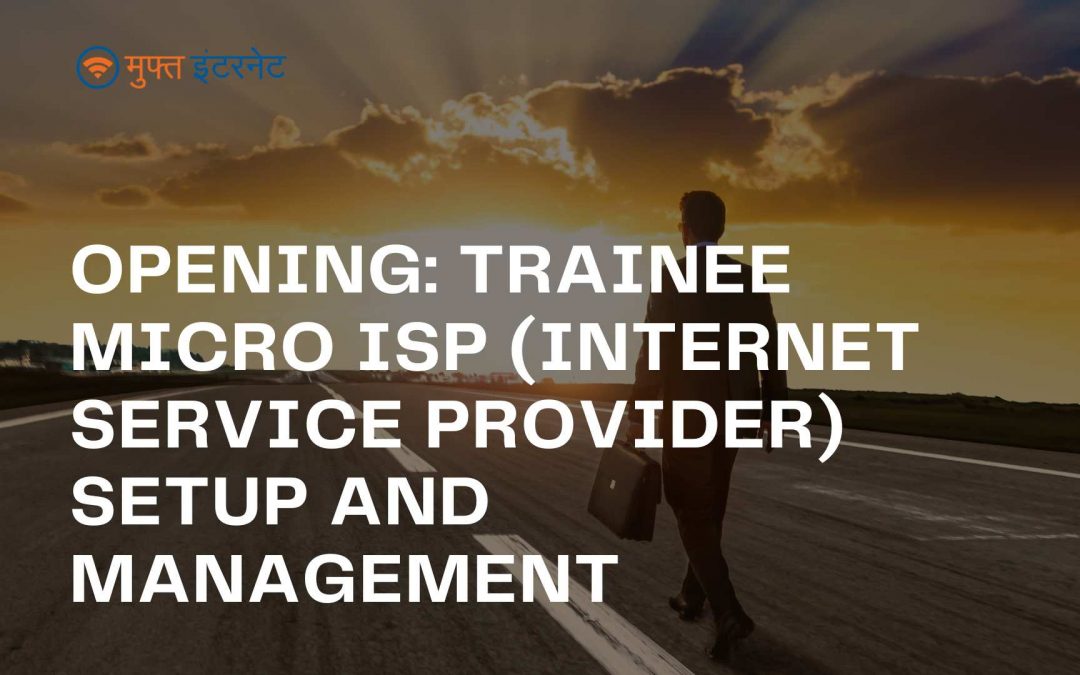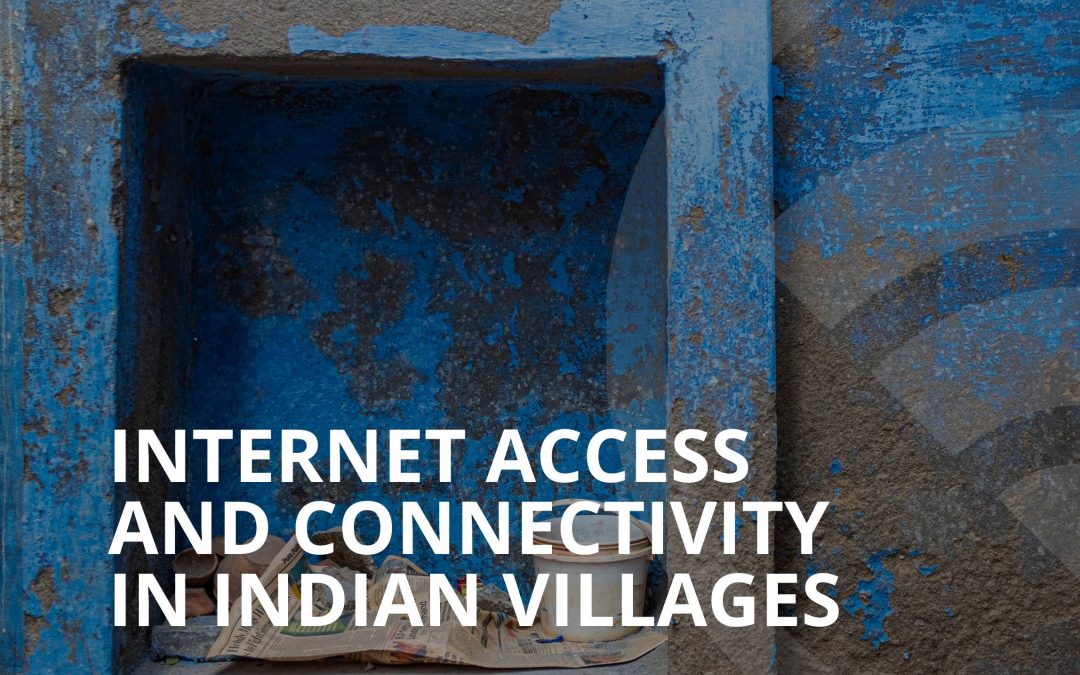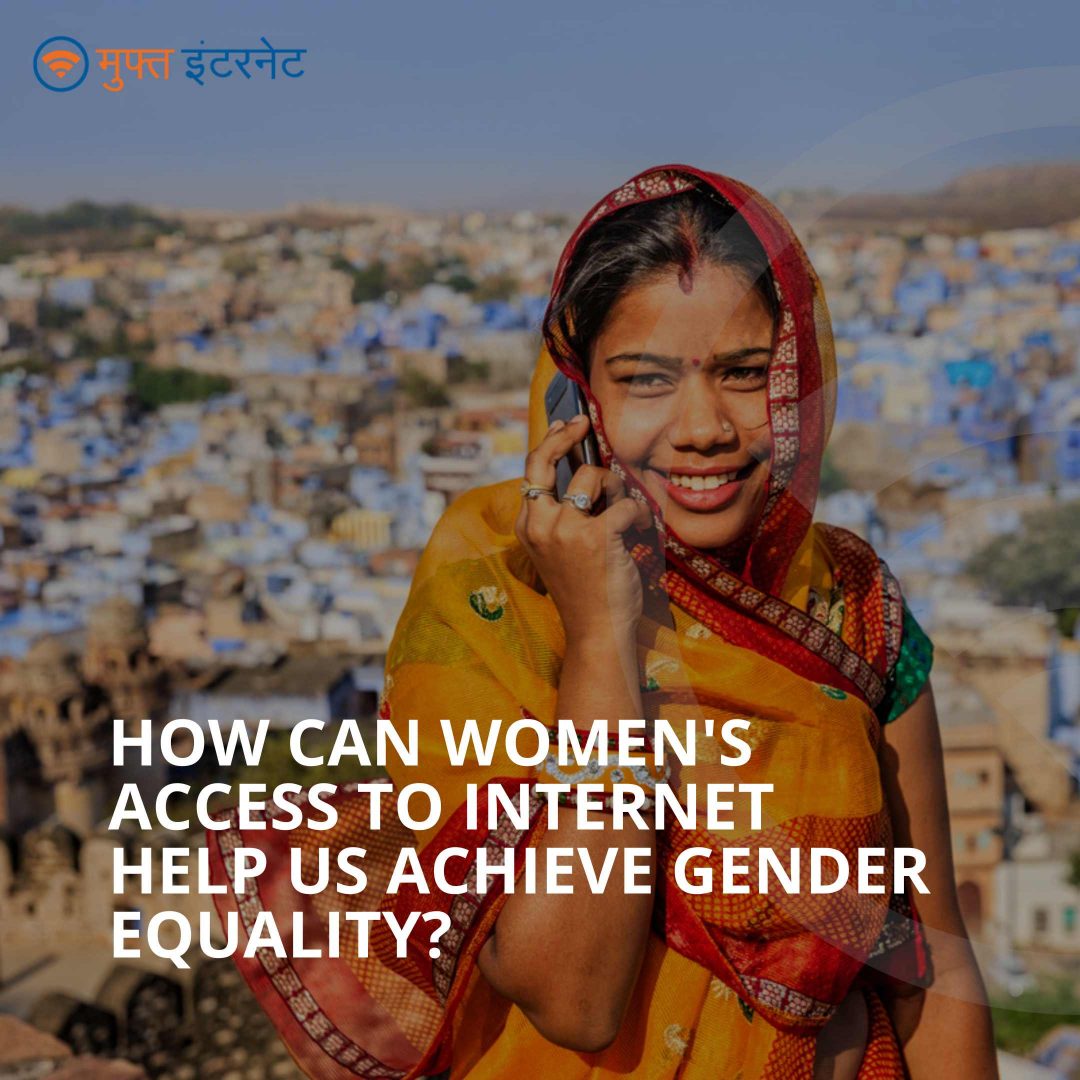
by pazmuft | Jan 24, 2024 | How to Become an ISP |
Getting an ISP business on its feet already faces its challenges, and especially so when it is located in a rural and underdeveloped area. Here at Muft, we have compiled an array of tactics and plans to help you make your ISP business reach farther. Here’s a more detailed elaboration on each strategy:
- Local Community Engagement:
- Actively participate in local events, fairs, and gatherings to establish a visible presence in the community.
- Sponsor local sports teams, cultural events, or community projects to enhance brand recognition and build trust. This also ties in with word-of-mouth marketing, as it lets people without access to internet know about your business.
- Engage with local leaders and influencers to gain support and credibility within the community.
- Word-of-Mouth Marketing:
- Implement referral programs that offer incentives, such as discounts or free services, to existing customers who refer new subscribers.
- Encourage satisfied customers to share their positive experiences through testimonials, both online and offline.
- Collaboration with Local Businesses:
- Forge partnerships with local businesses to provide bundled services, creating mutually beneficial promotions or discounts for shared customers.
- Tap into existing local business networks to expand your reach and enhance the value proposition for customers.
- Educational Workshops:
- Host workshops on topics like basic internet skills, online safety, and the advantages of high-speed internet to empower the community.
- Position the ISP as an educational resource, fostering a positive image and increasing community engagement.
- Local Language Advertising:
- Craft marketing materials in the local language to resonate more effectively with the target audience.
- Use culturally relevant imagery and messaging to ensure that the advertising aligns with the values and preferences of the community.
- Door-to-Door Campaigns:
- Train a team to conduct personalized door-to-door visits, addressing concerns, and explaining the benefits of the ISP’s services.
- Gather feedback from potential customers to understand their specific needs and tailor offerings accordingly.
- Local Cable TV and Radio Ads:
- Utilize local cable TV networks and radio stations to reach a broad audience, taking advantage of traditional media in areas where these channels remain popular.
- Design ads that highlight the local relevance of the ISP’s services and their positive impact on the community.
- Social Media Presence:
- Establish and maintain an active presence on popular social media platforms in the area, sharing relevant content and engaging with the community.
- Use social media to address customer inquiries, showcase local events, and highlight the positive contributions of the ISP to the community.
By combining these strategies, village-based ISPs can create a comprehensive marketing approach that aligns with the specific needs and characteristics of their target audience.

by pazmuft | Jan 19, 2024 | How to Become an ISP |
Location: North East India
Job Type: Full-time
About Us:
Muft Internet is India’s fastest-growing rural broadband provider, dedicated to bridging the digital divide in rural areas by empowering individuals to set up and manage their own internet services. We are seeking a candidate who is passionate about IT, learning new things and eager to contribute to our mission – connecting every village in India with world class Internet access.
Job Description:
We are looking for an entry-level Trainee to join our team and learn the ropes of setting up, deploying, and managing a micro Internet Service Provider (ISP) company. This position offers an exciting opportunity to gain hands-on experience in the telecommunications industry and make a meaningful impact in rural communities.
Responsibilities:
– Learn and understand the fundamentals of ISP setup and management under the guidance of experienced professionals.
– Assist in the deployment and maintenance of networking infrastructure for micro ISPs.
– Participate in training programs to develop technical skills related to ISP operations.
– Collaborate with team members to support the expansion of internet services in rural areas.
– Contribute ideas and creativity to improve processes and services.
Requirements:
– Basic computer skills and familiarity with internet usage.
– Eagerness to learn and grow in a dynamic and fast-paced environment.
– Ability to work flexible hours and adapt to changing priorities.
– Strong communication skills and a collaborative mindset.
– A passion for technology and a desire to make a positive impact in underserved communities.
Benefits:
– Competitive salary and benefits package.
– Opportunity for career growth and development.
– Exposure to cutting-edge technologies in the ISP industry.
– Chance to be part of a mission-driven company with a strong focus on social impact.
How to Apply:
If you are excited about the prospect of joining Muft Internet and are ready to take on this challenge, please submit your resume and a cover letter outlining your interest in the position and why you would be a great fit for our team.

by pazmuft | Jan 18, 2024 | Digital Divide |
How Many Villages in India Lack Internet Access?
India, with its vast geography and diverse topography, faces a significant challenge in ensuring equitable internet access across all its regions. While the country has made tremendous strides in enhancing digital connectivity, a substantial number of villages still remain disconnected from the internet’s vast resources. This digital divide is more pronounced in certain states, particularly in remote and rural areas.
The Current State of Internet Connectivity in Indian Villages
Out of approximately 5.97 lakh villages in India, it’s estimated that around 25,067 villages lack mobile and internet connectivity. This situation highlights a significant gap in digital inclusion, impacting various aspects of life, from education to healthcare and economic opportunities.
Detailed State-Wise Data:
While comprehensive data for each Indian state is not readily available, here’s what we know about some states:
1. Odisha: Leads with the highest number of villages without internet access, totaling 6,099.
2. Arunachal Pradesh: A critical border state with 2,223 out of 3,035 villages lacking internet connectivity, which is over 73% of its villages.
3. Madhya Pradesh: 2,612 villages are yet to be connected to the internet.
4. Maharashtra: Has 2,328 villages without internet access.
5. Andhra Pradesh: Reports 1,787 villages without internet connectivity.
6. Jharkhand: Has 1,144 such villages.
7. Nagaland: Approximately 378 out of 1,400 villages lack high-speed mobile internet.
8. Mizoram: About 296 out of 704 villages are without high-speed mobile internet.
9. Ladakh: Of its 236 villages, 155 are still without high-speed internet.
10. Meghalaya: 2,418 out of 6,459 villages lack high-speed mobile internet.
States like Kerala, Punjab, Tamil Nadu, and Haryana have reported higher penetration of mobile services in their villages.
The Challenge Ahead
The figures indicate a significant digital divide, especially in rural areas. The Indian government, through various initiatives under the Universal Service Obligation Fund, is working to address this challenge. Projects like BharatNet aim to provide broadband connectivity to all gram panchayats, which could significantly improve the situation.
Moving Forward
Ensuring internet access in these unconnected villages is vital for achieving inclusive digital growth. It’s a large-scale endeavor that will require a multi-pronged approach, involving collaboration with government bodies, local communities, and organizations working towards digital inclusion.
As efforts continue to bridge this digital gap, it’s hoped that soon every village in India will be able to harness the power of the internet, opening up new avenues for growth and development across the nation.
This summary provides a glimpse into the current state of internet connectivity in rural India. For a more detailed understanding and latest updates, direct engagement with governmental sources and ongoing digital inclusion projects is recommended.

by pazmuft | Nov 1, 2023 | Digital Divide |
Introduction:
In today’s interconnected world, access to the internet has become an essential tool for social, economic, and educational opportunities. These are what make our society and people flourish, grow, and expand their horizons. However, despite the significant advancements in technology and connectivity, a persistent gender gap in internet access continues to exist. This essay delves into the reasons behind this disparity and highlights the importance of bridging the gender gap in internet access to foster equality and empower women worldwide.
The Gender Gap in Internet Access: Across the globe, women face barriers and challenges that limit their access to the internet. According to the International Telecommunication Union (ITU), women are on average 12% less likely to have internet access than men. This gender disparity is more prominent in developing countries and marginalized communities, where social, cultural, and economic factors intersect to create additional barriers.
- Socio-cultural Factors: Deep-rooted gender norms and societal expectations often restrict women’s access to technology and the internet. Discriminatory social attitudes, such as cultural beliefs about women’s roles and responsibilities, contribute to the gender gap. In some cultures, women are expected to prioritize household duties over accessing the internet, limiting their digital literacy and participation.
- Economic Disparities: Economic disparities play a significant role in limiting women’s access to the internet. In many societies, women face unequal employment opportunities and lower wages, making it challenging to afford internet-enabled devices and connectivity. Additionally, the lack of financial independence and control over resources further restricts women’s ability to access and utilize the internet.
- Education and Digital Literacy: Limited access to education and digital literacy programs exacerbates the breach. Gender bias in educational opportunities, especially in science, technology, engineering, and mathematics (STEM) fields, hampers women’s ability to acquire digital skills. This lack of technical proficiency prevents women from fully utilizing the internet’s potential, including online job opportunities, entrepreneurship, and educational resources.
Gender gap of Internet access in India
In India, there has been a significant gender gap in internet access, although the situation has been gradually improving. According to various reports, women in India have faced lower internet penetration rates and digital literacy levels compared to men.
One of the contributing factors to the gender gap in internet access in India is the imbalance in education and literacy rates. Historically, women in certain regions of India have been less literate, which can limit their ability to make good use of and benefit from internet services. Additionally, cultural and social norms, such as restricted mobility or limited access to digital devices, have also affected women’s internet access.
Efforts have been made to address these problems and bridge the gap in internet access in India. The government has launched initiatives like Digital India, which aims to provide affordable internet access and digital services to all citizens, including women. Non-profit organizations and community-based projects have also been working to improve digital literacy among women and provide them with the necessary skills to access and utilize the internet effectively.
Despite the efforts and advances made, this space between men and women’s net access is still grave. Ongoing endeavors to promote digital literacy, affordability, and gender balance in the digital space are crucial to ensuring that women have equal opportunities to access and benefit from this technology that is so vital in our times in India.
Digital India
Digital India is a government project commenced by the Government of India with the vision to transform the country into a digitally empowered society and a knowledge economy. Launched in 2015, it aims to provide digital infrastructure and literacy, as well as deliver various online services to the people of the nation.
The project focuses on three key areas: the creation of said infrastructure, including the provision of high-speed internet connectivity to rural areas; delivering government services digitally to enhance efficiency and transparency; and promoting digital literacy to empower citizens with digital skills.
Despite its ambitious goals, Digital India has faced several criticisms. Some critics argue that the project primarily benefits urban areas, leaving rural and marginalized communities behind in terms of access to the aforementioned infrastructure and services. The digital divide, the gap between those who have access to digital technologies and those who do not, remains a pressing perturbation.
Privacy and data safety have also been raised as concerns. The increasing digitization of services poses questions about the collection, storage, and usage of citizens’ personal information. Commentators argue that the government needs to ensure robust data protection laws and mechanisms to protect the people’s privacy.
Moreover, skeptics question the efficacy and implementation of various digital enterprises under Digital India. They highlight issues such as lack of internet connectivity in remote areas, inadequate digital literacy programs, and technological challenges faced by the population, particularly older individuals and those with limited resources.
While Digital India has made significant progress in improving access to digital services and infrastructure, addressing these criticisms is crucial to ensure inclusive and equitable digital transformation across the nation.
How can Internet access aid women?
Internet access can be tremendously helpful to women in various ways; it can bring about new chances, knowledge, people, connectivity, and even something as simple as a discount. Here are some ways in which internet access can be beneficent to women:
- Education: The internet provides access to a fountain of educational resources, including online courses, tutorials, and research materials. Women can use the internet to enhance their knowledge, pursue distance learning, acquire new skills, and overcome barriers to education. It offers opportunities for lifelong learning and personal development.
- Employment and Entrepreneurship: The internet has opened up avenues for remote work, freelance opportunities, and online entrepreneurship. Women can leverage internet platforms to find jobs, build professional networks, and create their own businesses. With the plethora of ways to market them on the net, these businesses can enlarge their audience and spread. It also provides them with flexible work options and financial independence.
- Information and Awareness: The internet serves as a valuable source of information on various topics, including health, legal rights, financial literacy, and social issues. Women can access critical information and resources to make informed decisions about their health, well-being, and rights. Online platforms and communities also facilitate sharing experiences, raising awareness, and advocating for gender equality and women’s rights.
- Social Connections and Support: Internet access enables women to connect with others, fostering social networks and support systems. Online platforms, social media, and discussion forums offer spaces for women to engage, share experiences, seek advice, and find solidarity with others facing similar challenges. It can combat isolation and provide emotional support.
- Access to Services: The internet can facilitate access to essential services, especially in areas where they may be limited. Women can get reach to healthcare information, telemedicine services, and connect with doctors remotely. Online banking and financial services enable access to financial resources and empower women to manage their finances more independently.
- Civic Engagement and Activism: Internet access provides a platform for women to engage in civic participation, express their opinions, and advocate for social and political causes. Women can use social media, online petitions, and digital platforms to raise awareness, mobilize communities, and influence change. It amplifies their voices and enables collective action.
- Personal Development and Entertainment: The internet offers a wide range of resources for personal growth, hobbies, and entertainment. Women can view content related to their interests, explore creative outlets, and find inspiration through online communities, blogs, videos, and podcasts, as well as give that inspiration to others.
Internet access can bridge gaps, break down barriers, and empower women to participate more fully in society. It plays a crucial role in promoting gender equality, enabling women to access information, resources, and opportunities that were previously inaccessible.
Conclusion
In conclusion, bridging the gender gap in internet access is crucial for empowering women and promoting gender equality. The internet provides women with valuable tools, resources, and opportunities that can transform their lives. Through improved digital literacy, enhanced infrastructure, affordable access, and efforts to address cultural barriers, we can create a more inclusive digital society.
The availability of internet resources enables women to access education, employment, and entrepreneurial opportunities. It provides them with information, awareness, and support on critical issues. Women can connect with others, foster social networks, and engage in civic participation. The internet empowers women to make informed decisions, pursue personal development, and access essential services.
However, achieving meaningful progress requires collective action. Governments, organizations, communities, and individuals must work together to promote digital literacy, affordability, and gender equality. By ensuring that women have equal opportunities to access and benefit from the internet, we can unlock their potential, amplify their voices, and create a more inclusive and equitable future for all.

by pazmuft | Oct 18, 2023 | How to Become an ISP |
[youtube https://www.youtube.com/watch?v=4TvPY4XFlgE]
In this video we will show you how to crimp an RJ45 connector with a Cat6 Lan cable. Below, we will also show you a written guide.
How to Crimp an RJ45 connector With a Cat6 LAN Cable
Materials Needed:
- Cat6/Cat5 LAN cable
- RJ45 connector
- Crimping tool
- Cable cutter
Step 1: Measure and Cut the Cable
- Determine the desired length of your Ethernet cable and cut the Cat6 cable to that length. Use a cable cutter or a sharp utility knife to make a clean cut.
Step 2: Strip the Cable Jacket
- Use a cable stripper or utility knife to strip off about 1.5 inches (3-4 cm) of the outer jacket from the end of the cable. Be careful not to damage the twisted pairs inside the cable.
Step 3: Untwist and Arrange the Wires
- After stripping the jacket, you will see four twisted pairs of wires. Untwist the wires carefully. Try to keep the twists as close to the cable jacket as possible to maintain optimal performance.
- Arrange the wires in the following order, from left to right: white-orange, orange, white-green, blue, white-blue, green, white-brown, and brown.
Step 4: Trim and Align the Wires
- Use a wire cutter or scissors to trim the ends of the wires so that they are all even and aligned. The trimmed wires should be long enough to reach the front of the RJ45 connector.
Step 5: Insert the Wires into the RJ45 Connector
- Carefully insert the wires into the RJ45 connector in the same order you arranged them. Make sure they go all the way to the front of the connector and stay in the correct order.
Step 6: Check the Wiring Order
- Double-check that the wires are in the correct order, following the T568B standard for Ethernet connections, which is the most common wiring scheme. The order, from left to right, should be: white-orange, orange, white-green, blue, white-blue, green, white-brown, and brown.
Step 7: Crimp the Connector
- Insert the RJ45 connector and cable into the appropriate slot on the crimping tool. Make sure the connector’s gold contacts are facing down.
- Squeeze the crimping tool firmly and evenly to crimp the connector onto the cable. This will secure the wires in place and create a solid connection.
Step 8: Repeat for the Other End
- If you’re making a patch cable, repeat the above steps to crimp an RJ45 connector onto the other end of the Cat6 cable.
Step 9: Test the Cable (Optional)
- If you have a cable tester, you can use it to check the continuity and correctness of the wiring in the cable. This step is optional but recommended to ensure a proper connection.
That’s it! You’ve successfully crimped an RJ45 connector onto a Cat6 LAN cable. Repeat the process as needed to create custom-length Ethernet cables for your networking needs.





